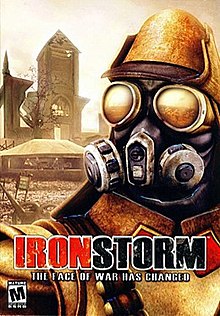
Quake III Arena is a 1999 multiplayer-focused first-person shooter developed by id Software. The third installment of the Quake series, Arena differs from previous games by excluding a story-based single-player mode and focusing primarily on multiplayer gameplay. The single-player mode is played against computer-controlled bots. It features music composed by Sonic Mayhem and Front Line Assembly founder Bill Leeb.

Quake II is a 1997 first-person shooter video game developed by id Software and published by Activision. It is the second installment of the Quake series, following Quake. The game's storyline is continued in its expansions, including one tying in Quake II and the first game, and Quake 4.
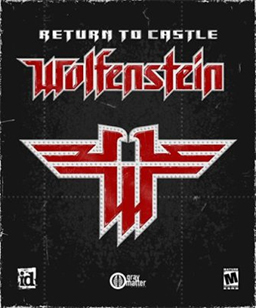
Return to Castle Wolfenstein is a first-person shooter video game published by Activision, released on November 20, 2001, for Microsoft Windows and subsequently for PlayStation 2, Xbox, Linux and Macintosh. The game serves as a reboot of the Wolfenstein series. It was developed by Gray Matter Studios and Nerve Software developed its multiplayer mode. id Software, the creators of Wolfenstein 3D, oversaw the development and were credited as executive producers. The multiplayer side eventually became the most popular part of the game, and was influential in the genre. Splash Damage created some of the maps for the Game of the Year edition. A sequel, titled Wolfenstein, was released on August 18, 2009.

Tom Clancy's Ghost Recon is a tactical shooter video game developed by Red Storm Entertainment and published by Ubi Soft in 2001 for Microsoft Windows. It is the first game in the Ghost Recon series. It was ported to Mac OS, Xbox and PlayStation 2 in 2002 and to the GameCube in 2003. Ports for N-Gage and Game Boy Advance were planned, but later canceled. Unlike Clancy's other tactical shooter series, Rainbow Six, Ghost Recon is not based on any of his books.

Call of Duty is a 2003 first-person shooter game developed by Infinity Ward and published by Activision. It is the first installment in the Call of Duty franchise, released on October 29, 2003, for Microsoft Windows. The game simulates infantry and combined arms warfare of World War II using a modified version of the id Tech 3 engine. Much of its theme and gameplay is similar to the Medal of Honor series; however, Call of Duty showcases multiple viewpoints staged in the American, British, and Soviet theaters of World War II.

Counter-Strike: Condition Zero is a first-person shooter video game developed by Ritual Entertainment, Turtle Rock Studios, and Valve, and published by Sierra Entertainment and Valve. The follow-up to Counter-Strike (2000), it was released in March 2004 for Windows. Condition Zero utilizes the GoldSrc engine and has a multiplayer mode, which features updated character models, textures, maps and other graphical tweaks. It also includes two single-player campaigns; Tour of Duty and Condition Zero: Deleted Scenes.

SWAT 3: Close Quarters Battle is a 1999 tactical first-person shooter video game developed by Sierra Northwest and published by Sierra Entertainment exclusively for Microsoft Windows. It is the seventh installment of the Police Quest series and the third installment in the SWAT subseries. SWAT 3 follows the Los Angeles Police Department (LAPD) Metropolitan Division SWAT team as they combat a wave of violent crime and terrorism in Los Angeles in the lead-up to a nuclear disarmament treaty signing.
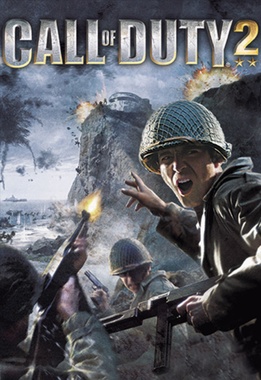
Call of Duty 2 is a 2005 first-person shooter video game developed by Infinity Ward and published by Activision in most regions of the world. It is the second installment of the Call of Duty series. Announced by Activision on April 7, 2005, the game was released for Microsoft Windows on October 25, 2005, and as a launch title for the Xbox 360 on November 22, 2005. Other versions were eventually released for OS X, mobile phones, and Pocket PCs.

Conflict: Desert Storm is a tactical shooter video game developed by Pivotal Games and published by SCi Games and Gotham Games for Microsoft Windows, PlayStation 2, Xbox, and GameCube; it is the first installment in the Conflict series. Another game of the same name was produced for Mobile phones, developed by Synergenix and published by Kayak Interactive.

Bet On Soldier: Blood Sport is a first-person shooter video game developed by French developer Kylotonn and published in the North American and UK market by Digital Jesters. The story revolves around an unknown world war where elite soldiers meet each other in a battle to the death in one-on-one deathmatches. These deathmatches are broadcast all over the world as a televised sport named "Bet On Soldier" and since has become the favorite form of entertainment with many viewers betting on soldiers.

Starship Troopers is a first-person shooter game developed by British company Strangelite Studios and published by Empire Interactive. The game is based on the 1997 movie of the same name by Paul Verhoeven.

Call of Duty 4: Modern Warfare is a first-person shooter video game in the Call of Duty franchise, developed specifically for the Nintendo DS. It was released by Activision in November 2007. The game features many elements of gameplay typical to the series, including vehicular missions and the usage of iron sights.

Call of Duty: World at War is a first-person shooter video game in the Call of Duty franchise, released for the Nintendo DS. The game takes place during World War II and features many elements of gameplay typical to the series, including vehicular missions and the usage of iron sights. It was released by Activision, alongside the console versions of the game, in November 2008.

Call of Duty: World at War is a 2008 first-person shooter game developed by Treyarch and published by Activision. It is the fifth main installment of the Call of Duty series and is the fourth entry in the series to be set during World War II. The game was announced by Activision in June 2008 and was released in November 2008, for PlayStation 3, Windows, Xbox 360, and Wii. Other games under the World at War title were published for the Nintendo DS and PlayStation 2, featuring different storylines and missions.
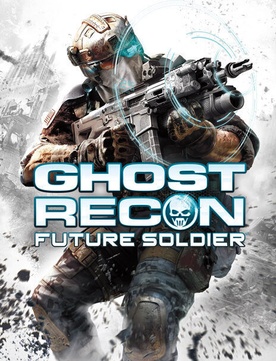
Tom Clancy's Ghost Recon: Future Soldier is a third-person tactical shooter video game developed and published by Ubisoft for the PlayStation 3, Xbox 360 and Microsoft Windows. It was released in May and June 2012. Tom Clancy's Ghost Recon: Future Soldier was announced to be in development by Ubisoft on January 22, 2009. The game has a futuristic take on the Ghost Recon series. The campaign has settings such as Bolivia, Zambia, Nigeria, Pakistan, Russia, and Norway.

XCOM: Enemy Unknown is a 2012 turn-based tactics video game that was developed by Firaxis Games and published by 2K. It presents a "reimagined" version of the 1994 strategy game X-COM: UFO Defense—also known as UFO: Enemy Unknown. XCOM: Enemy Unknown is set during an alien invasion of Earth in an alternative version of 2015; the player controls an elite, multinational, paramilitary organization called XCOM and commands troops in a series of turn-based tactical missions. Between missions, the player directs the research and development of technologies from recovered alien technology and captured prisoners, expands XCOM's base of operations, manages finances, and monitors and responds to alien activity.

Sniper Elite V2 is a 2012 third-person tactical shooter stealth video game developed and published by Rebellion Developments. It is the sequel to its 2005 predecessor Sniper Elite, which takes place in the same timeframe and location—the Battle of Berlin in April–May 1945—but with an altered narrative. The game's story follows an American OSS officer who must eliminate a group of scientists involved in the German V-2 rocket program before the Red Army captures them. Another sequel named Sniper Elite III was released in 2014. A remastered version for Microsoft Windows, Nintendo Switch, PlayStation 4, and Xbox One was released on May 14, 2019.

Metal Gear Solid V: The Phantom Pain is a 2015 action-adventure stealth video game developed by Kojima Productions and published by Konami. Directed, written, and designed by Hideo Kojima, it is the ninth installment in the Metal Gear franchise, following Metal Gear Solid V: Ground Zeroes, a stand-alone prologue released the previous year. Set in 1984, nine years after the events of Ground Zeroes, the story follows mercenary leader Punished "Venom" Snake as he ventures into Soviet-occupied Afghanistan and the Angola–Zaire border region to exact revenge on those who destroyed his forces and came close to killing him during the climax of Ground Zeroes.
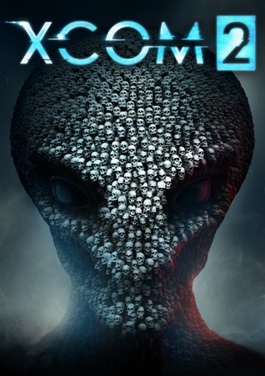
XCOM 2 is a 2016 turn-based tactics video game developed by Firaxis Games and published by 2K. It is the sequel to 2012's reboot of the series, XCOM: Enemy Unknown; it takes place 20 years after the events of Enemy Unknown. XCOM, a military organization trying to fight off an alien invasion, has lost the war and is now a resistance force against the occupation of Earth and the established totalitarian regime and military dictatorship. Gameplay is split between turn-based combat in which players command a squad of soldiers to fight enemies, and strategy elements in which players manage and control the operations of the Avenger, an alien ship that is used as a mobile base for XCOM.

Turok is a first-person shooter video game developed by Propaganda Games, and published by Disney Interactive Studios for the PlayStation 3 and Xbox 360 in February 2008, later ported on to Microsoft Windows in April. This is the only game produced under the Touchstone Games label. The game is loosely based on the comic book series of the same title and is a reboot of previous Turok video games. Players assume the role of Native American space marine Joseph Turok, who is part of a team sent to a remote planet to apprehend General Roland Kane, Turok's former commanding officer, who is now a wanted war criminal. After crash landing, Turok discovers that the planet is home to all manner of dinosaurs, and must fight both the predatory creatures and Kane's private army on his mission to take down his former mentor.
